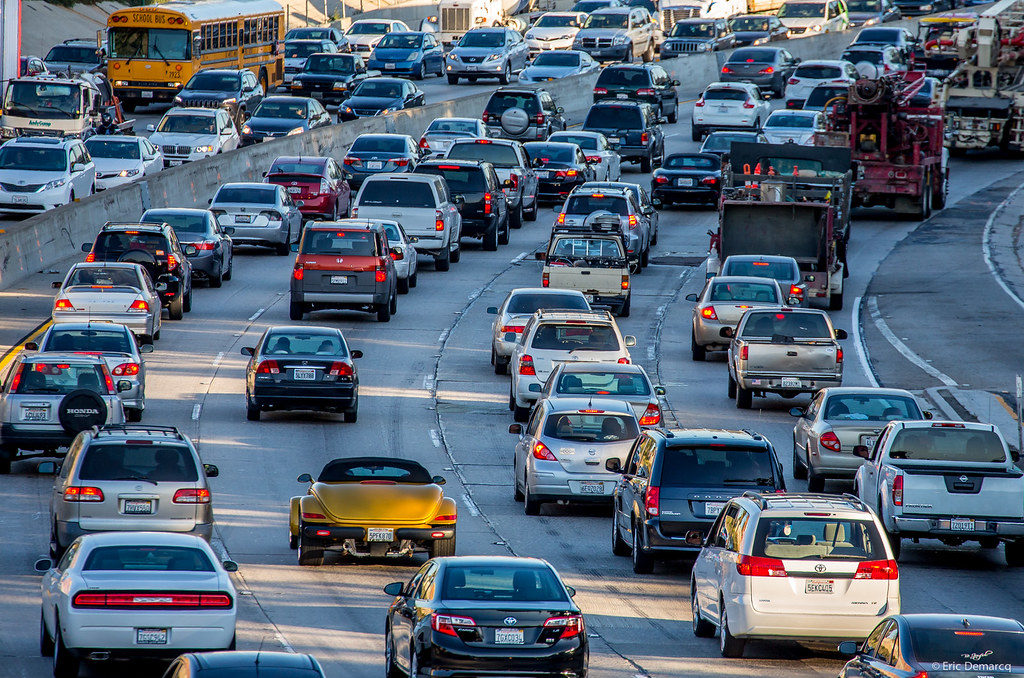Transportation costs in major urban centers in the United States are a significant concern for businesses and individuals alike. With the increasing need for efficient movement of goods and people, finding effective strategies to reduce these expenses is crucial for economic sustainability and quality of life.
Anúncios
By implementing innovative solutions and expanding existing infrastructures, urban areas can alleviate some of the financial burdens associated with transportation. Reducing transportation costs is not just about cutting expenses; it’s about enhancing efficiency and sustainability in cities.
As urban populations continue to grow, the challenge of increasing transportation efficiency while minimizing costs becomes more pressing. Strategic investments and technological advancements play a pivotal role in overcoming this challenge.
In this blog post, we will explore several strategies designed to reduce transportation expenditures in major U.S. cities. Our focus will be on smart technology integration, public transit improvements, and sustainable practices that can lead to significant cost savings.
Smart technology integration

The advent of smart technology provides incredible opportunities to lower transportation expenses in urban areas. Smart traffic management systems use real-time data to optimize traffic flow, helping to reduce delays and fuel consumption. By utilizing sensors and cameras, city planners can monitor and adjust traffic signals, leading to smoother commute times and less congestion.
Additionally, mobile applications that provide real-time public transit and traffic information allow commuters to choose optimal routes, contributing to a more efficient transportation network. When cities leverage such technology, the financial savings on fuel and time can be substantial for both individuals and businesses.
Furthermore, smart parking solutions, which guide drivers to available parking spaces, can greatly reduce the time spent searching for parking. This not only saves fuel but also decreases street congestion and pollution, making urban centers more livable and environmentally friendly.
Autonomous vehicles
Autonomous vehicles represent a significant leap forward in terms of reducing transportation costs. As this technology matures, self-driving cars and trucks can improve efficiency and safety on the roads. With precise and predictable driving patterns, autonomous vehicles can reduce traffic congestion and optimize fuel use.
Moreover, self-driving technology can significantly decrease labor costs for businesses relying on transportation services. Companies can expect to see reductions in delivery times and vehicle maintenance costs as autonomous technology advances and becomes more widely adopted.
The implementation of autonomous vehicle technology in urban centers is expected to bring long-term financial benefits, paving the way for a more efficient and cost-effective transportation infrastructure.
Data-driven decision-making
Data analytics offer an excellent opportunity to optimize urban transportation networks. By analyzing patterns in commuter behavior and traffic flow, cities can make informed decisions about where to allocate resources and how to design transit systems effectively. Predictive analytics can help in planning for peak travel times and adjusting transit schedules to meet demand efficiently.
This can reduce operating costs and improve service reliability, which in turn encourages more people to use public transit, further alleviating road congestion. Leveraging big data enables cities to better understand and model transportation needs, ensuring that infrastructure investments are made strategically and economically.
Improving public transit
One of the most effective strategies for reducing transportation costs is enhancing public transit systems. Improvements in public transportation can lead to significant savings for commuters as well as reduced environmental impact from fewer cars on the road. Investing in expanded bus and train networks can provide affordable and reliable travel options for residents, thus decreasing reliance on personal vehicles and cutting overall city traffic.
Additionally, increasing the efficiency and appeal of public transit can attract more users, further reducing transportation costs across the board. Expanding public transit accessibility ensures more equitable urban growth and makes transportation services more affordable to wider segments of the population.
Multimodal transportation hubs
Developing multimodal transportation hubs can greatly enhance the efficiency of urban transport. These hubs integrate various forms of transit, allowing for seamless transfers between buses, trains, bicycles, and even pedestrian walkways. By offering more flexible and combined transport options, cities can encourage the use of public transit and other sustainable travel modes.
The ease of connectivity brought by these hubs can dramatically reduce total travel times and cut costs associated with separate, inefficient trips. As more cities adopt this approach, overall transportation expenses can significantly decrease while improving commuter experience. A well-connected transit network ensures that different modes of transportation work together, providing greater accessibility and convenience for city dwellers.
Electrification of public transit
Electrifying public transit is a pivotal strategy for reducing operating costs and minimizing environmental impact. Electric buses and trains are more cost-efficient over their lifetimes compared to diesel-powered counterparts, thanks to lower fuel costs and maintenance requirements. Moreover, transitioning to electric transit options has broader environmental benefits, reducing urban air pollution and contributing to overall city sustainability goals.
With advancements in battery technology, the feasibility of maintaining large, electric-powered transit fleets is becoming increasingly achievable. As cities plan for future transit investments, prioritizing electrification can contribute significantly to reducing long-term transportation costs and improving environmental health in urban centers.






